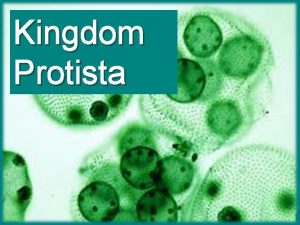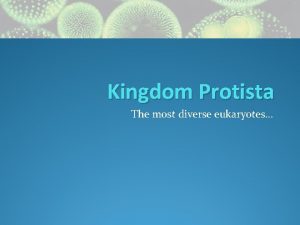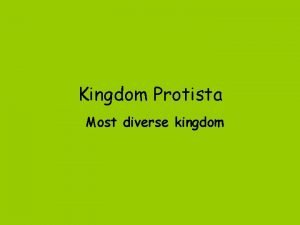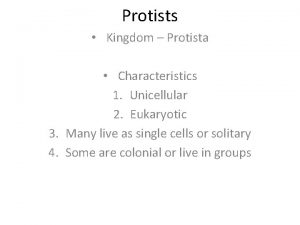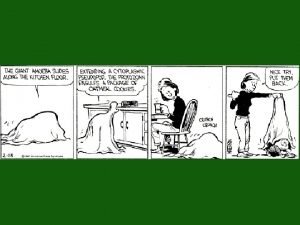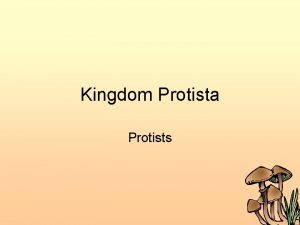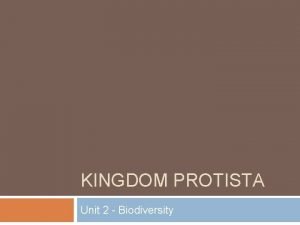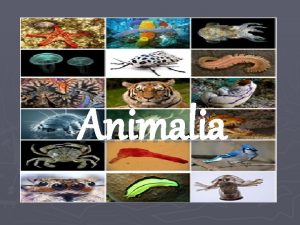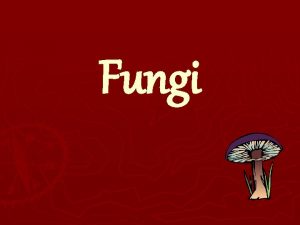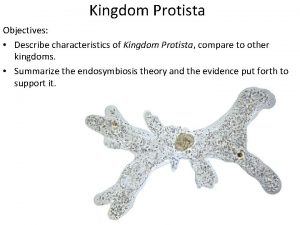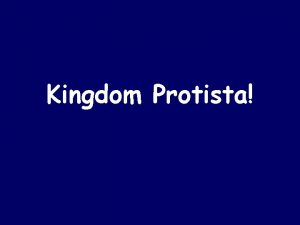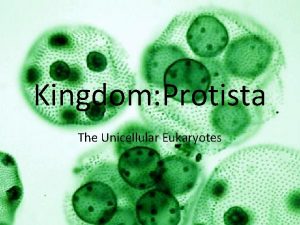Kingdom Protista Distinguishing Characteristics Entirely eukaryotic Most are











- Slides: 11

Kingdom Protista

Distinguishing Characteristics • Entirely eukaryotic • Most are unicellular & microscopic, but some are multi-cellular • Multi-cellular representatives are simple organisms with no specialized tissues • Some form chains or colonies • Live in moist environments – Why? • Most are mobile via cilia (= tiny hairs), flagella(= whip-like tail), or pseudopodia (= false foot)

Method of Nutrition Heterotrophic & autotrophic Heterotrophic protozoans ~ get their nutrition by decomposition & filter feeding or endocytosis Autotrophic protozoans (i. e. algae) are major producers in aquatic ecosystems

Method of Reproduction Asexually (although your book will say sexually too through conjugation) Conjugation Exchange of DNA

The Good & The Bad • Many are photosynthetic and begin many aquatic food chains • Some cause disease or illness in humans, animals, and plants • Provide a protective shelter for aquatic organisms • Some are decomposers • Used in the food industry (i. e. ice cream, candy, nutritional products) • Symbiotic relationships (trinchonymphs in the guts of termites & lichens) Plasmodium vivax • Algae can cause problems if humans are involved (i. e. algal bloom)

Algal Blooms

Many Different kinds of Protists • Separated into Groups based on shared characteristics • Three Groups: 1) Plant-like ~ autotrophic group 2) Animal-like ~ heterotrophs that consume 3) Fungi-like ~ heterotrophs that decompose

Plant Like Protists (the algal group – at least the majority) Pyrodinium bahamense Volvox aureus All are autotrophic!

Animal Like Protists (the protozoan group) Amoeba proteus Salpingoeca fusiformis Paramecium auerelia All are heterotrophic!

Fungus-like Protists (the decomposers) Hermitrichia serpula Fuligo septica – common name = “dog vomit” Stemontis fusca All are heterotrophic ~ via decomposition!

The Odd Balls (Could fit in multiple groups because some of them are autotrophic & heterotrophic and mobile & immobile. )
 Protista distinguishing characteristics
Protista distinguishing characteristics Is animalia prokaryotic or eukaryotic
Is animalia prokaryotic or eukaryotic Insidan region jh
Insidan region jh The most diverse kingdom
The most diverse kingdom Protista euglena
Protista euglena Old kingdom middle kingdom new kingdom
Old kingdom middle kingdom new kingdom Nnn ruled
Nnn ruled Roman empire
Roman empire Capital of egypt during the old kingdom
Capital of egypt during the old kingdom Plantae kingdom characteristics
Plantae kingdom characteristics 2 characteristics of protista
2 characteristics of protista Are protists eukaryotic
Are protists eukaryotic
